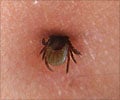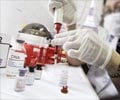Diagnosis of Cat Scratch Disease
When a physical examination reveals swollen lymph nodes and a scratch or bite caused by a cat, the doctor may suspect cat scratch disease. A more detailed physical examination may also reveal splenomegaly.
The following are some of the diagnostic tests employed to detect CSD.
- Bartonella henselae Indirect Fluorescent Antibody (IFA) test is quite efficient in identifying the presence of the causative bacteria. Test sensitivity is typically quite poor(53%), but this can be effectively improved by concurrent use of both IgG and IgM testing, which are more specific.
- Lymph node biopsy is carried out to rule out other diseases
- Polymerase chain reaction (PCR) test is carried out on a lymph node sample to detect the presence of the henselae bacteria. This is, by far, the most sensitive of all the diagnostic tests
- Routine lab tests are not very useful as they can come up with non-specific results such as leukocytosis and increased sedimentation rate. But they can help to rule out other life -threatening diseases.
- Cerebrospinal fluid (CSF) test results are usually normal, but can show elevated protein levels or mild pleocytosis.
- Electroencephalogram (EEG) findings may show a diffuse pattern in CSD patients with encephalopathy. This, however is non-specific and resolves by itself, once patient recovers
- Histopathological studies such as those using Brown-Hopp tissue Gram stain or Warthin-Starry silver staining reveal small, curved, gram-negative bacilli (image below).

Foot note of pic: Warthin-Starry stained sections of lymph node of CSD affected persons showing chains and clusters of organisms.











